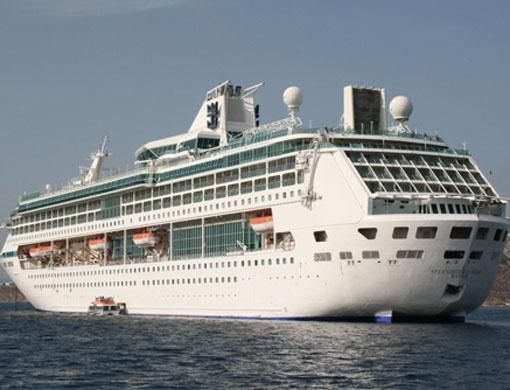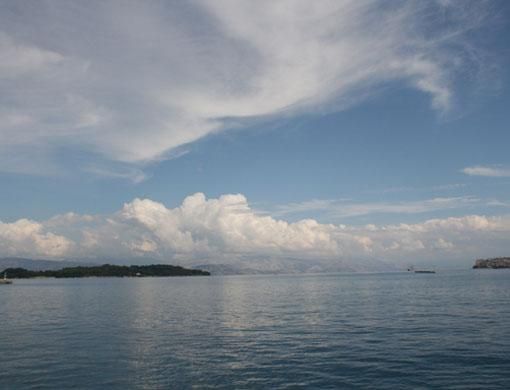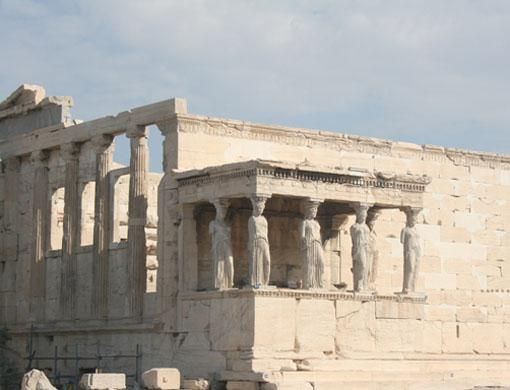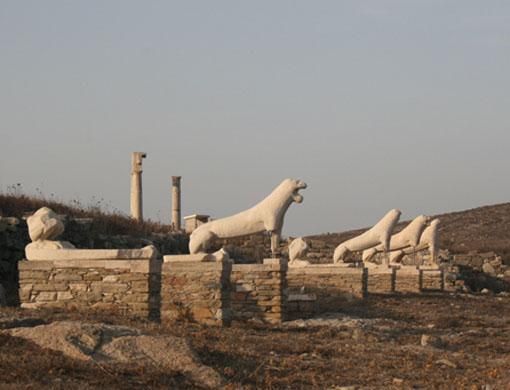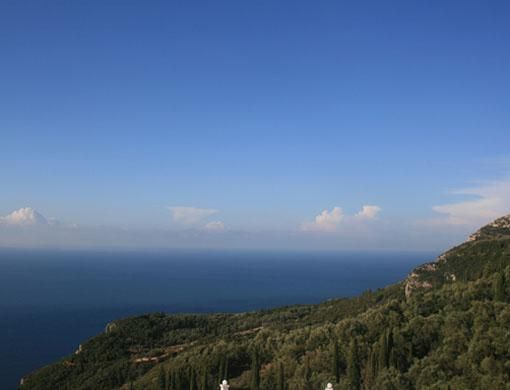My jaw dropped as I watched satellite images of ominous grey smoke swirling and wafting up from the Greek peninsula.
Massive fires ravaged the Greek countryside in the late summer of 2007, causing enormous losses in its wake.
With a Mediterranean holiday just around the corner, we could only hope and pray that the centuries-old artefacts and ruins would remain unharmed.
Wanderlust triumphed over our misgivings and we found ourselves aboard the cruise ship Splendour of the Seas approximately three weeks after the fires were extinguished in Greece.
And so, armed with our tickets and passports, we made a beeline for the Royal Caribbean boarding desks in Venice.
Our seven-day journey would see us bidding arrivederci to Venice and enthusiastically gushing yassou to the Greek isles and Athens, with a final stop in Croatia.
As the ship left the harbour, we stood on the top deck, cuddling our 9-month-old baby, absorbed in the tranquillity of the gathering dusk.
The Venetian skyline was peppered with red roofs and cathedral spires and as they faded into the evening, we felt a twinge of sadness to be leaving such an enchanting city.
Our parting scene was that of dark green canals — dotted with gondolas — twisting and snaking their way around Venice.
Aboard the ship
Wet behind the ears as far as cruising was concerned, we set about unearthing the treasures that lay from bow to stern.
Belonging to the “Vision Class'' of the Royal Caribbean fleet, the Splendour of the Seas weighs an awesome 70,000 tonnes and cruises at a top speed of 24 knots.
She comes equipped with glass-walled dining rooms, themed bars and lounges, solariums and a Centrum with a shopping arcade.
And if that is not enough, swimming pools, an all-day spa and a fitness centre cater to 2,000 passengers.
For those with a passion for all things outdoor, the 18-hole miniature golf course, a rock-climbing wall and an outdoor pool add that extra zing.
Enchanting chandeliers lit up the decor and paintings hung in all nooks and crannies of the ship.
We made note of the location of the theatre and the lounge, namely the 42nd Street theatre and the Top Hat lounge.
The lobby is seven decks high with glass stairs and mirrored ceilings. The discotheque was situated at the highest deck, offering a panoramic view of the glistening sea.
As we walked past the indoor and outdoor swimming pools and the many bars, a Jamaican band began to play, adding pulsating rhythm to the salty sea air.
Our luggage was in our stateroom by the time we reached it. It seemed what the room lacked in space, the bed more than made up in comfort.
Soft bed linen and pillows that you could sink into — this was indeed a bed to write home about! A closer look at the various restaurants revealed banquet-style spreads — live cooking stations, elaborate presentations, mouth-watering fast-food options and haute cuisine suggested there would be a menu to suit every palate.
The tinkle of ivory keys and the smooth strains of a jazz singer permeated the central lounge area.
A few guests relaxed with books in the library. Out on the decks, the aroma of food wafted in the air as hors d'oeuvres were served at the poolside.
After being formally introduced to the ship's crew and captain at the Captain's Ball which we discovered, was a delightful marriage of presentation and cuisine.
A hush then settled over the dining rooms and the atmosphere tingled something electric.
The serving staff gathered around the grand piano to sing O Sole Mio as a surprise treat for the guests. And quite a good performance it was.
Delos & Mykonos
As the ship sliced through the Adriatic Sea towards the Cyclades group of islands in Greece the following afternoon, Venice had become only a memory.
A ferry transported us to our first shore excursion point, the historic island of Delos and later to neighbouring Mykonos.
The mythical birthplace of the Greek deities Apollo and Artemis, Delos boasts the richest collection of ruins of antiquity.
Its has a bleak landscape and the daylight appears enhanced by the dearth of trees or mountains.
Though a feast for archaeological buffs with a soft spot for Greek history, Delos was not baby-friendly, as we soon discovered.
Craving cool comfort and shade from the muggy afternoon heat and dust, I dashed back (baby in tow) to the ferry.
Later, the hauntingly beautiful island of Mykonos emerged out of the approaching twilight.
As opposed to its stark and desolate sister island Delos, Mykonos appeared sophisticated and touristy.
Amber lights twinkled softly from blanched houses that dotted the hillside.
Dream-like in their appearance, taverns and restaurants along the quay beckoned visitors to sample the local fare.
Souvenir shops and bistros sat prettily on either side of cobblestone lanes that criss-crossed the island.
Ivory-tinted houses with indigo blue doors and windows cast hypnotic shadows as night fell around us.
Bidding adieu to Mykonos, our rumbling stomachs served as a reminder of our exhilarating day trip and we returned to the ship for the Formals Night.
Dinner time was all about glittering jewels, bow ties and sequinned gowns and we too dressed up to keep up with the Joneses.
Athens
A tour of Athens took us to the magnificent Acropolis and the Panathinaiko Stadium.
Heading towards the Acropolis, our bus drove past Emperor Hadrian's Arch and the Temple of Olympian Zeus.
On our climb up this massive mount, we stopped to catch our breath and gaze at the Propylaea, the Temple of Athena, Nike and Erechthrion and finally reached the Parthenon at the pinnacle.
Lunch, we decided, would be in the ancient Plaka, the marketplace. Wild horses could not keep us from our well-deserved lunch of famous Greek treats — tzatziki (a yummy yoghurt, lemon and garlic dip) and moussaka (a vegetable casserole dish interspersed with layers of ground meat topped with cream sauce.)
A vermilion sun was setting as we hopped on to a train to return to the ship.
Katakolon
Katakolon was our next port of call the following morning. Its tree-lined roads led to the ancient town of Olympia and a museum that houses some of the most significant artefacts from the sanctuary of Zeus, where the Olympics originated.
What began as a religious festival came to be the Olympic Games, held once every four years.
During the three months when the ancient Olympics were held, all wars were put on hold for the sports event to take place.
In ancient times, an eternal flame burnt at the temple of Hera — a fire that was never meant to go out — similar to the Olympic torch.
Feeling enlightened after the history lesson of the morning, we looked forward to a convivial evening among newly acquired friends on-board.
Like icing on a cake, our evening with a heady concoction of music and agile dancers topped off a wonderfully exciting day.
Corfu
Arising like a sun-kissed emerald out of deep blue waters, Corfu, with its lush greenery and crystal-clear coves, is one of the most popular of the Ionian Islands.
Three million olive trees grow on Corfu and the island produces 3 per cent of the world's olive oil.
Visions of secret coves nestled between mountains, inlets with azure waters, sleek sailboats leaving foaming white trails, timelessly swaying palms and olive-bathed hillsides were embossed on my mind.
The view from Bella Vista, the highest point on the island, was stunning, to say the least.
Mouse Island, or Pondikonissi as it is locally known, is one of the most photographed places in Greece and mythical legend claims that Odysseus was washed ashore on this island.
Castles spread across the island are pointers to the turbulent and battle-scarred legacy of Corfu.
The town has a certain allure and attracts visitors with its two forts, the Town Hall built by a Venetian, the church to patron saint Spyridon and its flower-filled gardens.
Split, Croatia
Our final sojourn was at Split, the second-largest city in Croatia, a place with a chequered history.
It's a picturesque seaside town nestled on the southwest coast of the Adriatic Sea.
The most important attraction is the enormous palace of Roman emperor Diocletian, which took ten years to build.
After Emperor Diocletian's death in AD313, numerous Roman rulers continued to use it as a retreat.
During the 7th century, many of its inhabitants sought sanctuary behind the palace's high walls and their descendants have lived there to this day.
Fishermen selling their fresh catch jostled for space in the tiny marketplace.
A walk through this quaint town reveals a mélange of the old and the modern, with historic buildings and trendy boutiques located side by side.
A meal of local seafood washed down with some refreshment was a nice way to bring the curtain down on our voyage.
Back at the port in Venice, it's time to say goodbye to the ship that has been home for the most enthralling seven days.
Suffice to say that it won't be long before our next passage aboard a cruise ship. Alas, as with all good things, these journey, too, had to come to an end.
— Andrea Bailey is a UAE-based freelance writer


